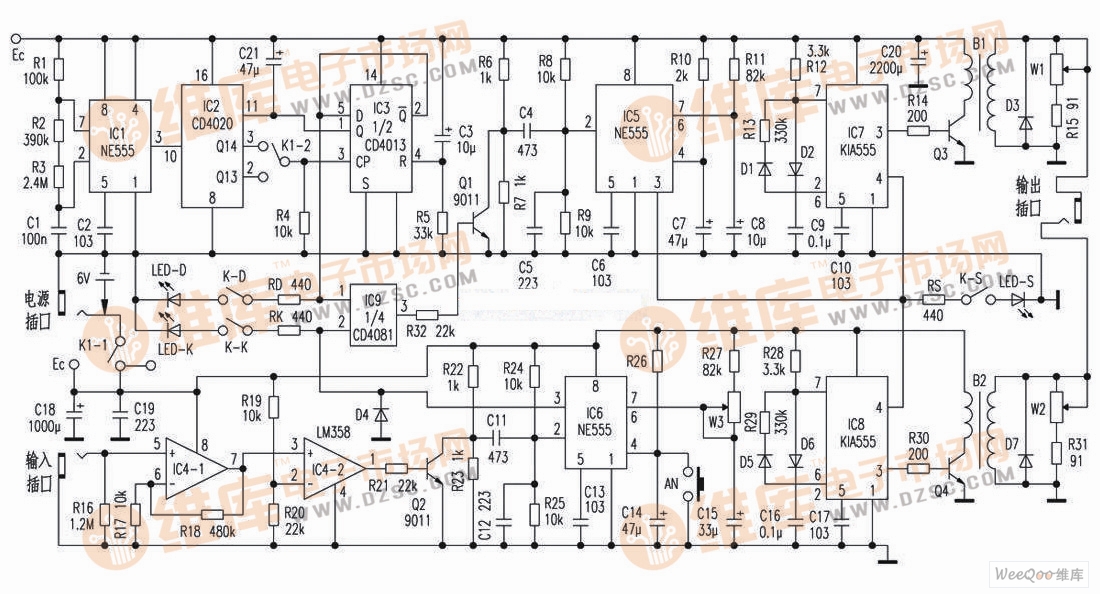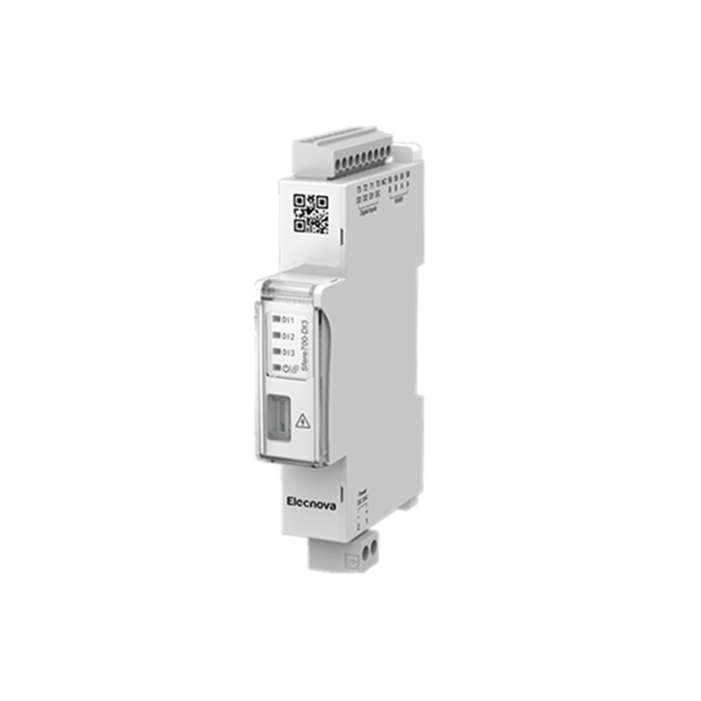TGQH9203 Obstructive Pulmonary Rehabilitation Device is an electronic device for the treatment of obstructive pneumonia. It can generate electrical pulses with a width of 0.3ms and a continuously adjustable amplitude of 10~150V, which has a certain effect on the rehabilitation of obstructive pneumonia.
Working principle: In the figure, IC1, IC2, IC3 and related components constitute the working timing control circuit of the device. Among them, IC1, R1~R3, C1, C2 form a multivibrator, and its output provides a clock signal for IC2. IC3 is a bistable flip-flop composed of 1/2 double D flip-flop CD4013. After the circuit is energized, the power supply enters the steady state of Q=0 and Q=1 through C3 and R5. Where Q=0 is directly applied to the {11} pin of IC2, so that IC2 starts counting; while Q=1 causes LED-D to illuminate through resistor RD and switch KD, indicating that the circuit enters the timing state, and Q=1 is added to IC9. 1} The foot opens the door. IC2 is a fourteen-digit serial counter, and Q13 and Q14 correspond to a frequency division of 2 (the power of 13) and 2 (the power of 14), respectively. According to the parameters of the figure and the position of switch K1-2, when the circuit works for 60 minutes, Q14 will output a high level. This level step is added to the CP end of IC3, so that IC3 is flipped to Q=1, Q=0. Steady state. Where Q=1 is applied to the {11} pin of IC2, IC2 stops counting and returns to the initial state, while Q=0 turns LED-D off and the AND gate closes.
The integrated dual op amp LM358 constitutes an input signal conversion circuit, in which IC4-1 is connected to a non-inverting linear amplifier, and IC4-2 is connected to a voltage comparator. When the sensor is connected to the input jack, the electrical signal generated by it is amplified by IC4-1 and applied to the non-inverting input of IC4-2. When the amplitude of the amplified signal exceeds the comparator's reference voltage, IC4-2 will output a high level and saturate Q2.
IC5, IC6 and their related components form two pulse-triggered one-shots. For IC6. The relevant components are R24 to R27, W3 and C11 to C15. Normally, the power supply is divided by R24 and R25 to provide 1/2Ec=3V voltage for the {2} pin, and the {4} pin is high level, so IC6 maintains the steady state at V0=0. The power supply is divided by R22 and R23, so that the collector potential of Q2 is kept at 1/2Ec, and there is no voltage on capacitor C11. When the external input signal is converted to IC2 by IC4, the capacitor voltage cannot be abruptly changed due to the switching moment. Therefore, the potential of the foot is instantaneously close to ground. After that, the power supply charges C11 through R24 and Q2, so that IC6 is negative. The pulse triggers into the transient steady state of V0=1. At this time, the discharge switch inside IC6 is turned on, and the power supply is charged to C15 via R27 and W3. After the time of td1=1.1(R27+W3)C15, when the voltage on C15 rises above 2/3Ec, the output is inverted to V0=0. The transient steady state ends. During the transient stabilization period, the IC6{3} pin outputs a high level on the one hand LED-K illuminates, indicating that IC6 has entered the transient steady state; on the other hand, it is directly applied to the AND gate IC9, making it {3} The output is high, which in turn causes Q1 to be saturated. As in the case of IC6, the saturation conduction of Q1 will cause the {2} pin of IC5 to be subjected to a negative pulse and cause IC5 to enter a transient state with a transient steady state duration of td2 = 1.1R11C8.
IC7, IC8 and related components form two duty-regulated multivibrators. The start-up of these two oscillators is controlled by the output voltage of IC5{3}. When IC5 enters the transient steady state, its {3 The high level of the pin output on the one hand causes the LED-S to illuminate via the resistor R5, indicating that the IC5 has entered the transient state; on the other hand, it is applied to the {4} pins of IC7 and IC8, respectively, so that IC7 and IC8 start to oscillate. The oscillating outputs are taken out by the respective {3} pins, Q3 and Q4 are excited by R14 and R30, respectively, and pulse voltages are formed in the primary windings of B1 and B2, which are boosted and applied to the output jacks to form a composite electrical pulse. W1 and W2 are adjustment potentiometers, and changing the value can adjust the amplitude of the output electric pulse.

TGQH9203 obstructive pulmonary rehabilitation circuit
In summary, the operation of the device can be summarized as follows: the timing control circuit limits the time for the external output of the device, the input conversion circuit provides a trigger condition for IC6, and the high level of IC6 during the transient stabilization period passes through the AND gate. Q1 puts IC5 into a transient state, allowing IC7 and IC8 to oscillate during this period, outputting therapeutic electrical pulses.
In the figure, the AN connected between the IC*} pin and the ground is a manual button. During the operation of the timing circuit, pressing the AN can cause the IC6{3} pin to flip to a high level, which is common to both IC9 and Q1. Role; make IC5 enter the transient state, thus starting IC7 and IC8, so that the treatment electric pulse is manually controlled.
Smart monitoring module continuous recording, evaluation and monitoring of energy consumption. Smart monitoring module do not need to wire individual components. Data communication via Modbus RTU. Configuration via USB interface or fieldbus. Data logging on internal Flash memory.

Smart Monitoring Module,Smart Wireless Monitoring Module,Multi Circuit Energy Monitoring Meter,Digital Input Module
Jiangsu Sfere Electric Co., Ltd , https://www.elecnova-global.com